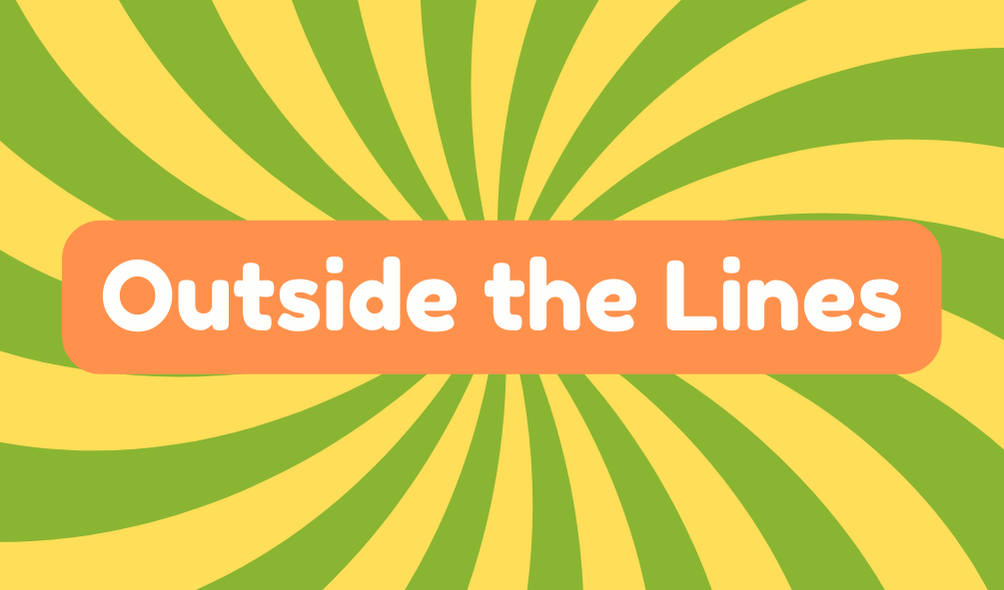The phrase "outside the lines" refers to breaking free from traditional expectations and embracing creativity. Its origin traces back to children's coloring books, where it signified both fine motor skill development and rule-following. Over time, it evolved to symbolize non-conformity and artistic expression. You might hear it used in contexts like "think outside the lines" or "work outside the lines," encouraging innovative thought. In today's fast-paced world, sticking to old norms may limit progress. Those who venture beyond the usual boundaries are often more successful. If you're curious about practical applications and historical significance, keep exploring.
Synonyms
When you think about actions and behaviors that defy convention, several synonyms come to mind. These words capture the essence of creative expression and unconventional ideas, appealing to those who dare to step outside predefined boundaries. Consider these terms as you explore innovative thought:
- Non-conformity
- Originality
- Individuality
- Creativity
- Unorthodoxy
Each term highlights a unique facet of going beyond standard expectations. While embracing these synonyms feels liberating, it's essential to understand that pushing boundaries can risk alienation or misunderstanding. Not everyone appreciates these unconventional ideas, and societal norms can be tough to challenge. Hence, while it's important to encourage innovation, a balanced approach that considers context is necessary for lasting impact. Your journey into creativity might just begin with these words.
Example of Sentences
Examples of sentences can illustrate how the phrase "outside the lines" manifests in everyday language. You might notice individuals embracing creative expression in ways that challenge conventional frameworks. Here are some ideas that reflect these innovative thoughts:
- She completed her project outside established norms.
- They formed a partnership beyond the typical business standards.
- Employers now seek candidates with unconventional ideas.
- He values freedom to adapt creatively when faced with challenges.
- The CEO fosters innovation, often disrupting traditional corporate culture.
These sentences reflect how thinking beyond traditional boundaries sparks innovation. While it's crucial to abide by certain norms, embracing unconventional ideas can lead to breakthroughs. However, caution is needed—mindlessly rejecting all rules can lead to chaos. Balance is essential for effective creative expression.
Origin
The phrase "outside the lines" has its roots in the idiom "color outside the lines," which associates with children's coloring books that feature confined spaces. Initially, these books aimed to develop fine motor skills through rule adherence, but the phrase evolved if you consider the broader cultural interpretations. Over recent decades, it's taken on new meaning, challenging conventional boundaries. Today, "outside the lines" embodies the spirit of non-conformity, encouraging artistic expressions that defy societal norms. It promotes thinking beyond traditional frameworks and inspires innovation. However, it's essential to recognize that while pushing limits is important, it can also lead to chaos if not guided by purpose. So, embracing this mantra responsibly can release true creativity.
Collocations
Collocations related to "outside the lines" highlight its versatility in language and expression. You'll find phrases that capture the spirit of creative expression and boundary breaking in various contexts. These collocations help you convey your thoughts more vividly:
- Think outside the lines
- Draw outside the lines
- Color outside the lines
- Live outside the lines
- Work outside the lines
Each phrase emphasizes a departure from standard practices. However, while embracing innovation, it's essential to critically assess the consequences. Not every boundary-breaking idea leads to success, so you should remain mindful of the balance between creativity and practicality. This awareness can enhance your approach to challenges, ensuring your unique perspectives don't stray too far from effectiveness.
How to Use in Everyday Language
Using the phrase "outside the lines" can enrich your everyday conversations by encouraging creativity and unconventional thinking. When you advocate for creative expression, you inspire people to think beyond the norm. Try using this phrase in discussions about problem-solving; it shifts focus from traditional methods to innovative solutions. You might say, "Let's approach this project outside the lines," subtly nudging others toward fresh ideas. However, be aware that not everyone values this mindset. Some might cling to conventional processes, believing they yield safer outcomes. It's important to balance your encouragement of creativity with a realistic outlook on traditional practices. In doing so, you foster an environment where innovative thought can thrive, while still acknowledging conventional approaches when necessary.
Why Is It Still Relevant Today?
Embracing creativity by thinking outside the lines remains essential in today's rapidly changing world. As you navigate through the complexities of modern life, you'll encounter numerous creativity barriers that stifle progress. It's crucial to recognize these obstacles and actively pursue innovative thinking. Organizations demand individuals who aren't afraid to challenge traditional norms—those who can adapt and pivot in unpredictable situations. Remaining relevant means pushing boundaries and rejecting conformity, which allows fresh ideas to flourish. In this era, where competition is fierce, adhering strictly to established rules can hinder your potential. So, venture beyond the typical, question assumptions, and release your creative potential. Remember, innovation isn't just desired; it's required for success in today's dynamic landscape.







